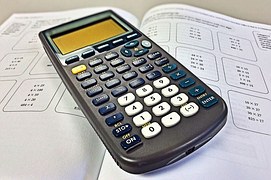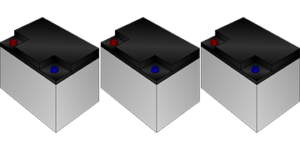Why would you need a home battery backup power supply for hydroponics?
Well everything the plants need is run off the mains in most systems.
You have heaters, pumps, timers and sensitive electronics all required to keep your plants alive.
Without electricity for a few hours your plants will suffer and some will never recover.

So how can you reduce the chances of the mains outage disaster?
You get yourself a UPS (uninterruptible power supply), a home battery backup power supply. This device, when the mains decides to disappear will keep your computer alive – preventing a catastrophic crash.
Looking around you will see a whole ream of them – how do you decide which one is suitable.
Well you could just go for the biggest one you can find or afford and hope, or you could look into your system – find out the power requirements and size it to suit.
Most computers will have the power requirements printed on the back – or in the operating manual – they may be listed as voltage and current, watts or VA. How confusing.
With the voltage and current if you multiply the two together you get the VA.

So if your computer shows ac input: 220-230vac 4A.
If you multiply 230*4 you get 920VA changing this to watts you multiply it by the industry standard of 0.6 – you get 552W.
How does this relate to hydroponics?
Well you are using electricity for most of the processes.
So what you need to do is the find out the power requirements of your system.
Make a list of the electrical items within the system, with the voltage and current required – or power.
Make a list of the times the different parts are on and off.
If you put this into a spreadsheet and graph it then you can get the maximum load requirement. Note: an open office spreadsheet is at the end of the post.
Alternatively you can add all of the power requirement together and take that as the maximum load.

If you have:
Water pump 3w on 5 mins off 55mins peak 3w average power 3w*5/(5+55) = 0.25wH
Controller 2w cont peak 2w average 2wH
Air pump 3w cont peak 3w average 3wH
Heater 100w on 5min off 25 min peak 100w average 100*(5/30) = 16.6wH
From the list above the peak requirement is 100+3+2+3 = 108W
The average power over time is much different due to the low on/off times.
We have 0.25+2+3+16.6 = 21.85wH
So the power supply needs to be able to supply 108W peak demand with a continuous average power of 21.85W per hour.
A 350w ups would be capable of running this system but for how long?
You need to find out the type of battery fitted.
Using the capacity of the battery and making a judgement on the efficiency of the unit we can make a calculation of the time the unit will last using:
(batt V * Ah*eff)/VA rating = xx *60 = minutes
So if we had a 360W ups with a 12v 7Ah battery (refer to spec sheet for this) how long would it last?
Find the VA rating:
360/0.6 = 600VA
Now the time:
(12*7*0.8)/600=0.112*60=6.72 minutes
This is at the maximum load of 360w
If we reduce the load to 108W – as in the example above.
108/0.6=180
(12*7*0.8)/180=0.373*60=22.4minutes
How long would a UPS last with a load?
Working backwards we can find the battery capacity required to last for a time period.
Transposing the above formula for Ah:
(time/60*VA)/(batt V *effeciency) = Ah
So we want it to last 1 hour or 60 minutes we have
(60/60*180)/(12*0.8)=18.75Ah
Note: time must be in minutes
So if we changed the battery to a 18Ah capacity battery the system would last approx 1hour.
As the average load may be less than the maximum then the system would last longer than this. It all depends on whether the battery is in top condition when the changeover takes place.

The battery type needs to be a deep cycle battery, I know they are more expensive but due to the construction of the cells they are more robust. Using a standard car battery and discharging it to less than 80% of its capacity will severely shorten its life and possibly buckle the plates within the cells. This will destroy the battery. So go for a deep cycle battery – it is designed to be float charged and cycled to at least 50% of its capacity. Making sure the battery keeps its cool is a way of extending its life. Test the battery every month to at least 10% of its capacity.
So now you know how to specify a Home battery backup power supply.
If you have any questions on how to calculate your Home Battery Backup Power Supply, please fill in the comments box below.
Thanks for reading
Phil
